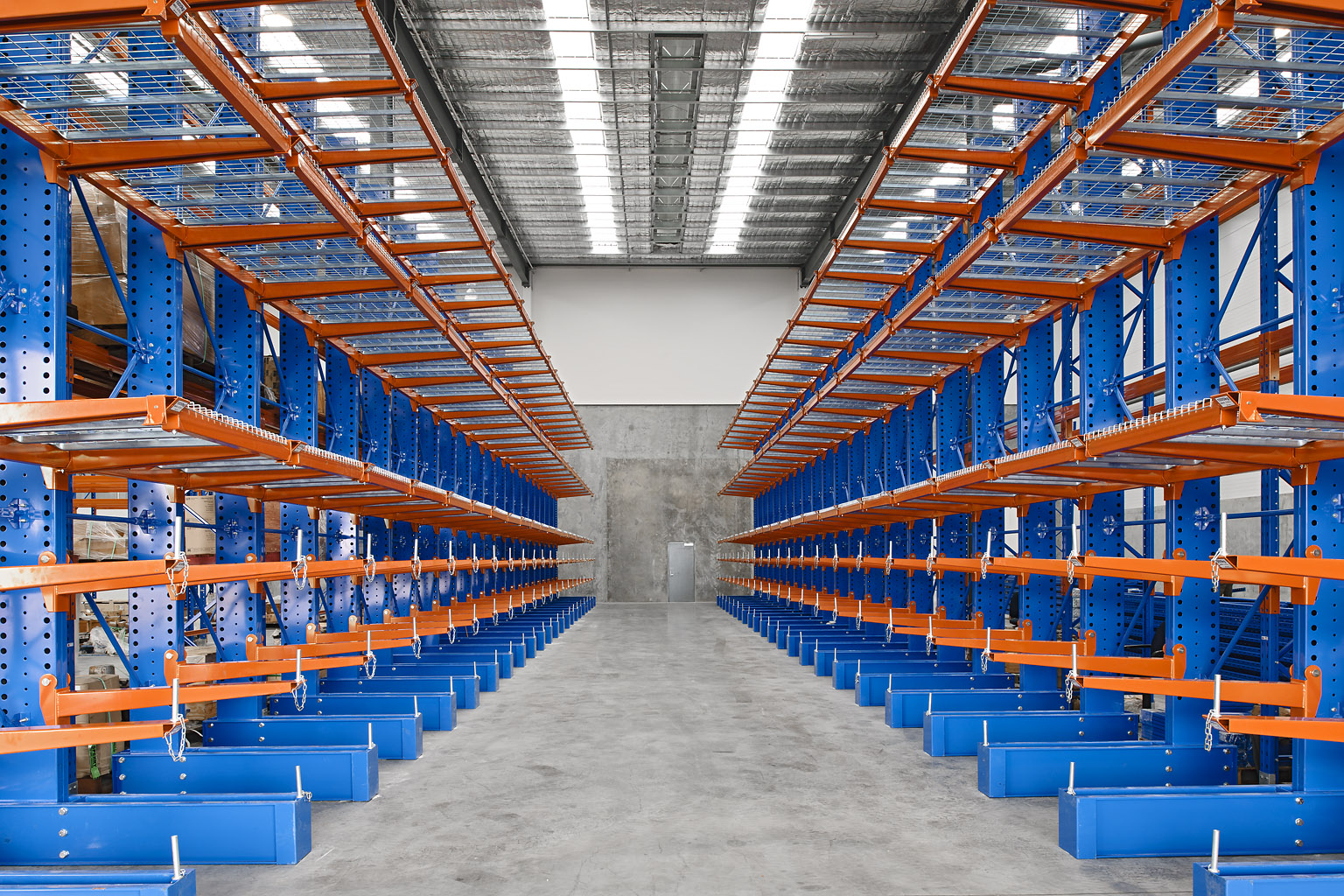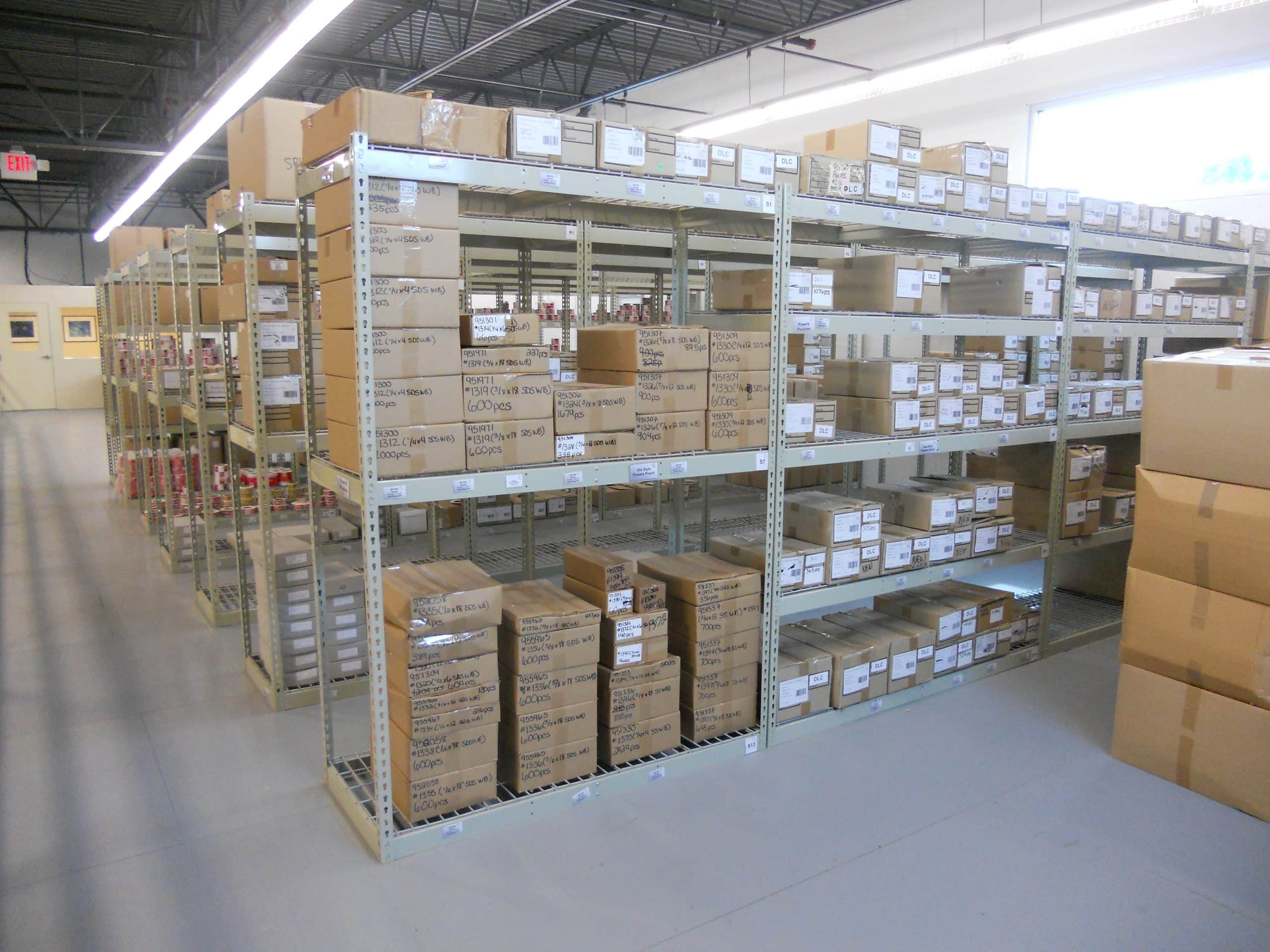Industrial warehouse shelving forms the backbone of efficient storage and inventory management in modern warehouses. From heavy-duty pallet racks to specialized cantilever systems, the right shelving solution can transform your warehouse operations, maximizing space utilization, streamlining workflows, and ensuring safety.
This comprehensive guide explores the various aspects of industrial warehouse shelving, providing valuable insights into design considerations, types of shelving, materials used, and crucial safety measures. Discover the best practices and innovative solutions to optimize your warehouse storage and elevate your supply chain efficiency.
Industrial Warehouse Shelving Design Considerations
The design of industrial warehouse shelving plays a crucial role in optimizing storage capacity, ensuring product accessibility, and enhancing operational efficiency. Several factors need to be taken into account when designing shelving systems for industrial warehouses, including storage capacity, product dimensions, and accessibility requirements.
Industrial warehouse shelving systems come in various designs, each with its own advantages and disadvantages. Some common shelving designs include:
Pallet Racking
- Designed to store palletized goods.
- Heavy-duty construction, allowing for high load capacities.
- Available in various heights and depths to accommodate different storage needs.
- Can be configured with accessories like wire decks, beams, and safety features.
Selective Racking
- Provides direct access to each pallet, allowing for easy loading and unloading.
- Suitable for storing a wide variety of products.
- Can be adjusted to accommodate different pallet sizes.
- Offers good visibility and accessibility, facilitating inventory management.
Drive-In Racking
- Allows forklifts to drive directly into the racking system.
- Maximizes storage density by eliminating aisles between rows of racking.
- Suitable for storing large quantities of similar products.
- Requires specialized forklifts and can be more challenging to access individual pallets.
Push-Back Racking
- Utilizes gravity to move pallets back as new pallets are loaded.
- Provides first-in, last-out (FILO) inventory management.
- Suitable for storing large quantities of products with high turnover rates.
- Requires sloped lanes and can be more expensive than other shelving designs.
Types of Industrial Warehouse Shelving

Industrial warehouse shelving comes in various types, each designed for specific storage needs. The primary types include pallet racks, cantilever racks, and drive-in racks.
Pallet racks are the most common type, used to store palletized goods. They consist of vertical frames and horizontal beams that support the pallets. Cantilever racks are designed for storing long and bulky items, such as pipes or lumber. They feature arms that extend from a central column, providing support for the stored items.
Drive-in racks are ideal for high-density storage, allowing forklifts to drive directly into the racks to access the stored goods.
Comparison of Industrial Warehouse Shelving Types
The following table provides a comparison of the features, benefits, and applications of each type of industrial warehouse shelving:
| Type | Features | Benefits | Applications |
|---|---|---|---|
| Pallet Racks | Vertical frames, horizontal beams, adjustable height | Versatile, high capacity, easy access | General storage, palletized goods |
| Cantilever Racks | Arms extending from a central column, adjustable height | Suitable for long and bulky items, easy access | Storage of pipes, lumber, machinery |
| Drive-In Racks | Continuous rows of racks, forklifts drive directly into racks | High-density storage, efficient space utilization | High-volume storage, inventory control |
Materials Used in Industrial Warehouse Shelving

Industrial warehouse shelving is made from a variety of materials, each with its own advantages and disadvantages. The most common materials used are steel, aluminum, and plastic.
Steel
Steel is the most durable and strongest material used in industrial warehouse shelving. It is resistant to fire, corrosion, and impact. Steel shelving is also relatively inexpensive and easy to install.
However, steel shelving is also heavy and can be difficult to move. It is also susceptible to rust if it is not properly protected.
Aluminum
Aluminum is a lightweight and durable material that is resistant to corrosion. It is also more expensive than steel, but it is also more lightweight and easier to move.
Aluminum shelving is ideal for applications where weight is a concern, such as in high-rise warehouses or on mobile shelving units.
Plastic, Industrial warehouse shelving
Plastic is a lightweight and inexpensive material that is resistant to corrosion and chemicals. It is also easy to clean and maintain.
However, plastic shelving is not as strong as steel or aluminum, and it can be damaged by impact. Plastic shelving is best suited for light-duty applications, such as storing small parts or supplies.
Safety Considerations for Industrial Warehouse Shelving
Ensuring the safety of industrial warehouse shelving is crucial to prevent accidents and maintain a secure work environment. Several key considerations must be addressed to ensure shelving systems meet safety standards.
Load Capacity
Determining the load capacity of shelving units is essential to prevent overloading and potential collapse. Factors to consider include the weight of stored items, the number of shelves, and the type of shelving system used. Exceeding the load capacity can compromise the stability of the shelves and pose a significant safety hazard.
Stability
Ensuring the stability of shelving systems is vital for preventing tipping or collapse. Proper installation, regular inspections, and adherence to load capacity guidelines are crucial. Factors affecting stability include the height of the shelving units, the weight distribution of stored items, and the presence of any external forces, such as earthquakes.
Seismic Resistance
In areas prone to seismic activity, industrial warehouse shelving should be designed to withstand earthquakes. Seismic resistance can be achieved through proper anchoring, bracing, and the use of specialized shelving systems designed for earthquake resistance. Ensuring seismic compliance helps minimize the risk of damage or collapse during seismic events.
Final Conclusion
In conclusion, industrial warehouse shelving is an integral component of modern warehouse management. By understanding the design principles, material options, and safety considerations, businesses can make informed decisions that enhance storage capacity, improve accessibility, and ensure the safety of their operations.
Embracing the latest shelving technologies and adhering to industry best practices will empower warehouses to optimize space utilization, streamline inventory management, and achieve operational excellence.
